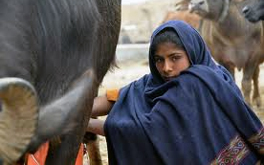Livestock sector development for poverty reduction: an economic and policy perspective

Investing in livestock can sustain livelihoods and spur economic growth according to this new book published by FAO. It illustrates that effective policies and institutions are essential for equitable livestock sector development.
Livestock contribute to the livelihoods of an estimated 70 percent of the world’s rural poor. The increasing demand for animal protein in low- and middle-income countries provides an opportunity for the poor to improve their livelihoods. However, the nature of livestock farming and marketing of livestock and their products is determined by policy and institutional frameworks that rarely favour the poor. Livestock sector development for poverty reduction: an economic and policy perspective reviews major aspects of the livestock-poverty interface with the objective of identifying the conditions under which livestock can be an effective tool for poverty reduction; the interventions that allow livestock’s poverty reduction potential to be unlocked, and the contexts in which they do so; and ways of facilitating sustainable implementation of these interventions.
See Also
Report: World livestock 2011.
Feature: Rise of livestock.
Report: Livestock assets, livestock income and rural households.
Feature: The goat gamble.
Report: Status and prospects for smallholder milk production.
Report: State of food and agriculture.
Report: Contract farming and other market institutions.
Report: The developing world is poorer.
Feature: Drought and livestock.
